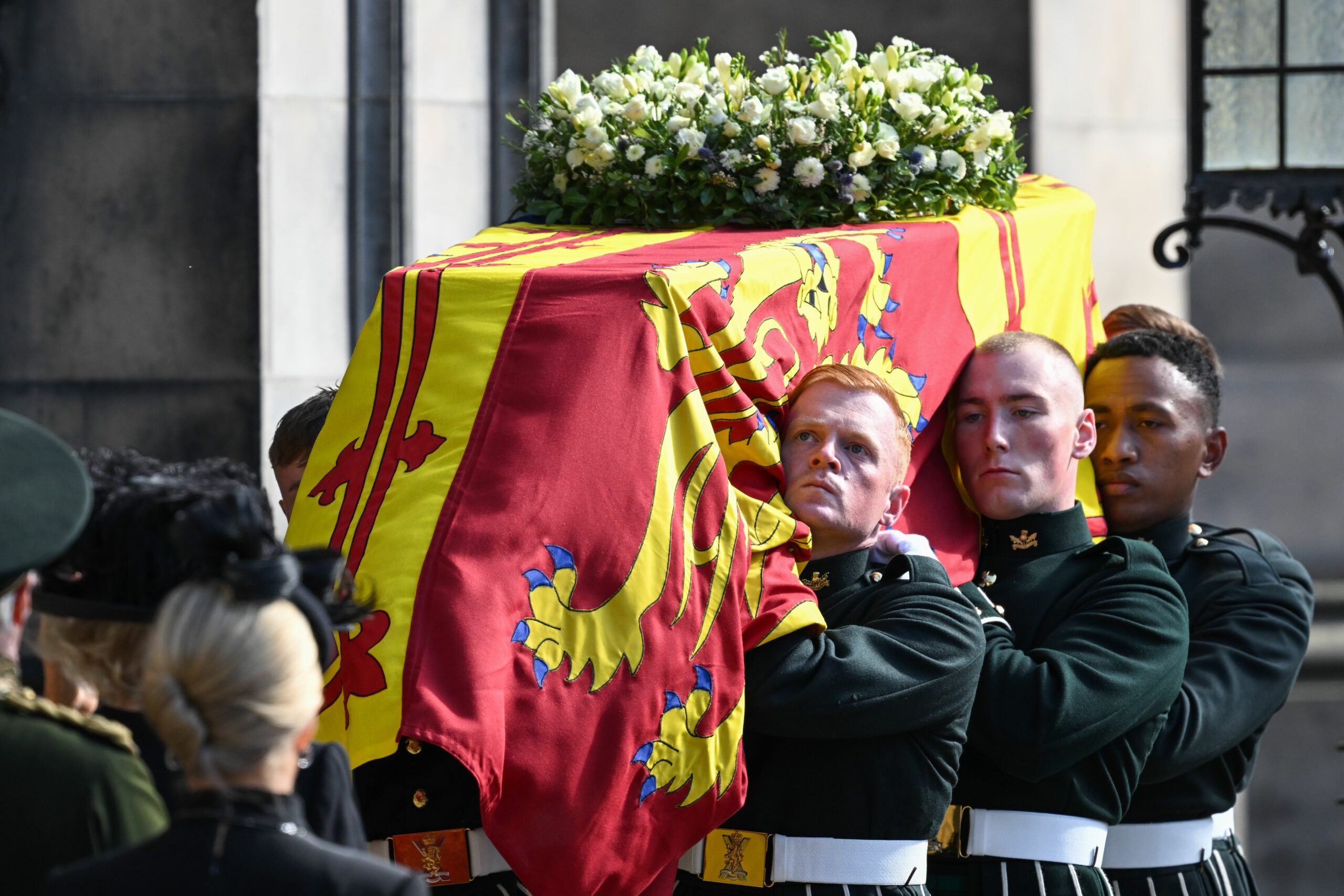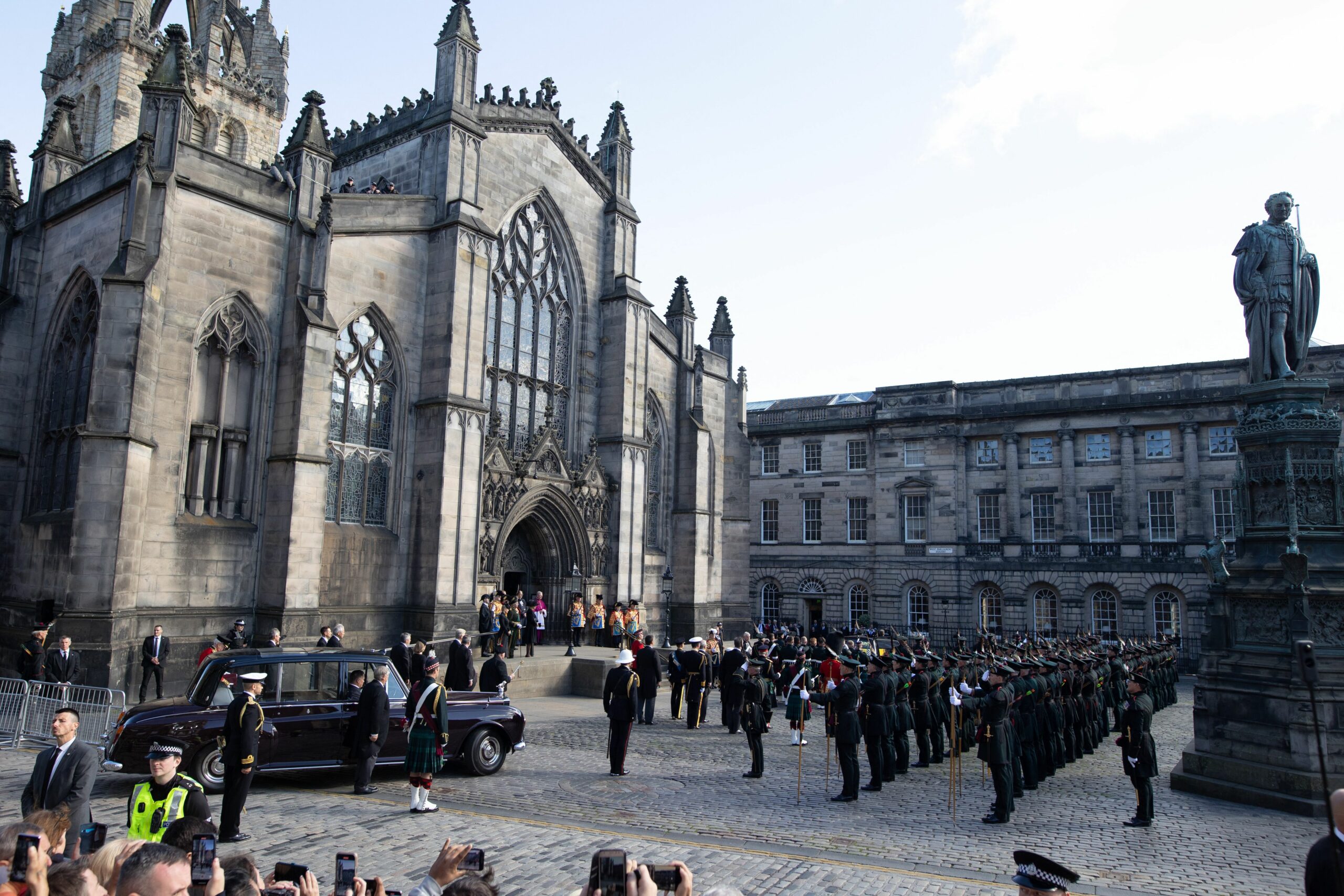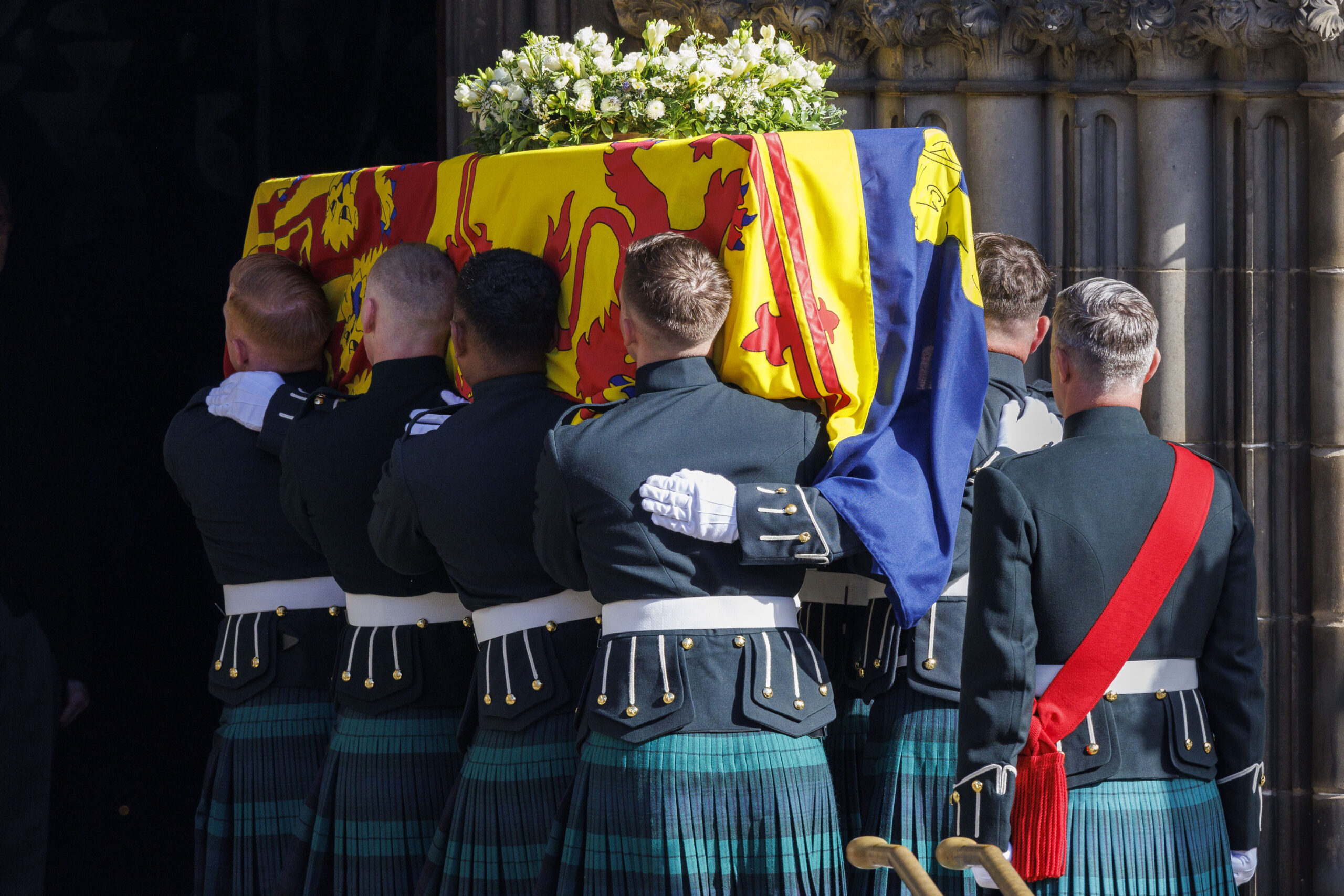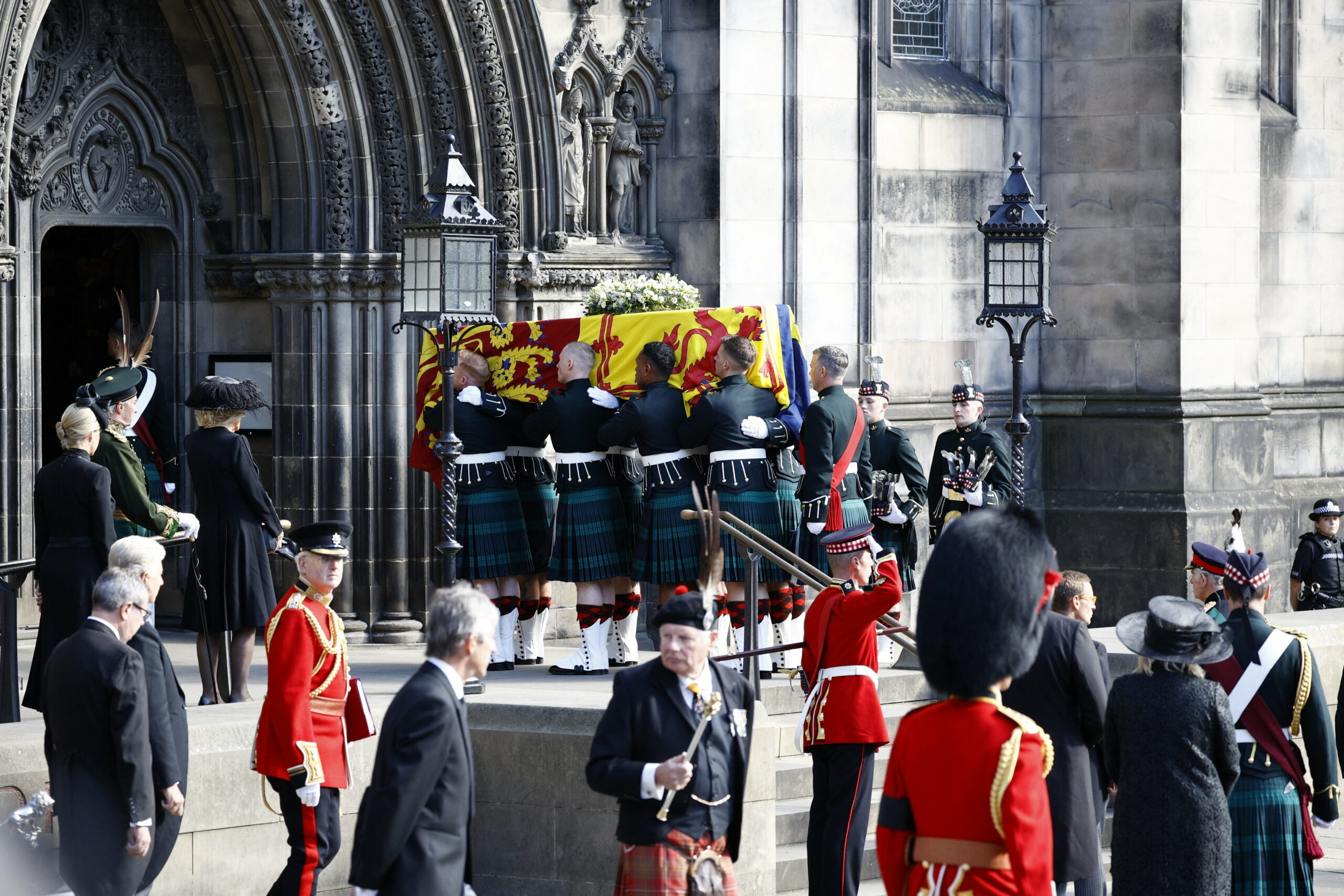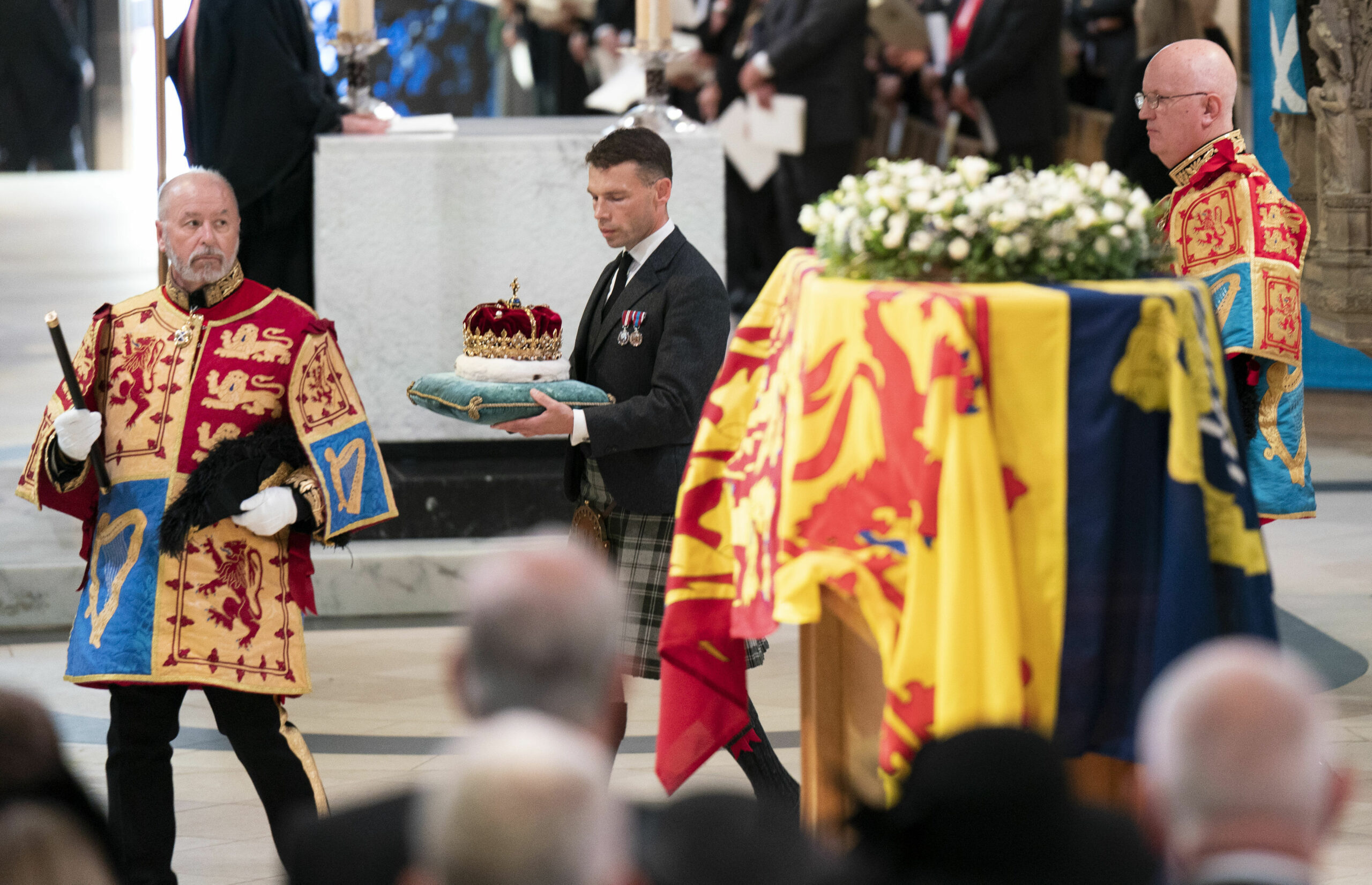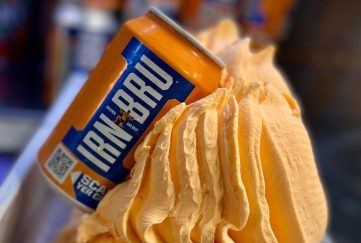The Crown of Scotland With Queen For The Final Time
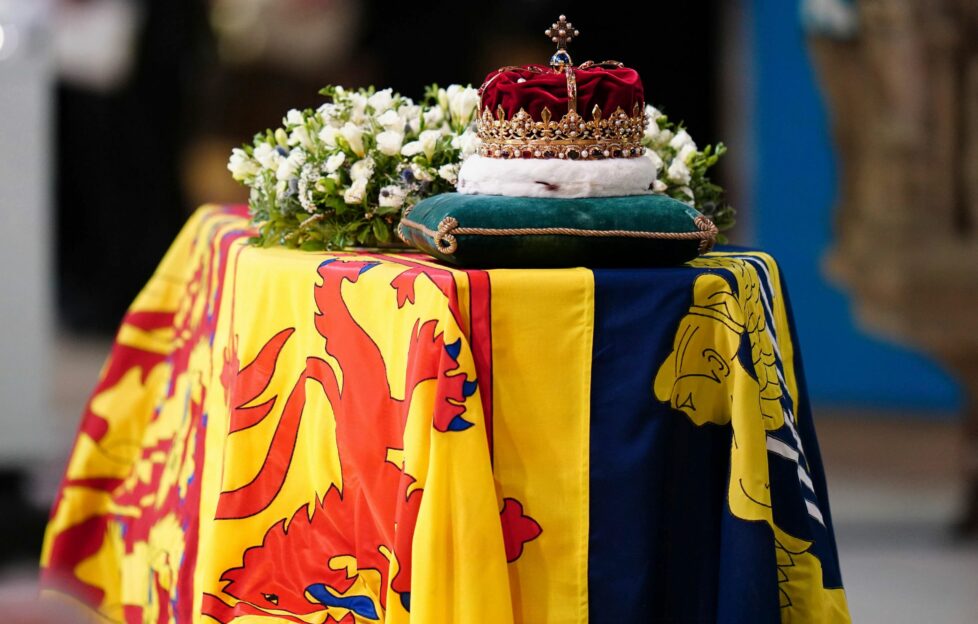
As Queen Elizabeth’s coffin rests with the Scottish Crown Jewels, discover the history of the honours from The Scots Magazine‘s 1758 archives
Today her majesty Queen Elizabeth II rests for the last time on Scottish soil with the Crown of Scotland.
Her coffin now lies in state in St Giles Cathedral, where thousands queued through the night to pay their respects.
Last night King Charles III; Anne, the Princess Royal; Prince Andrew and Prince Edward took part in the Vigil of the Princes. Each stood at one of the four corners of Her Majesty’s oak coffin, with their heads bowed.
The monarch’s coffin was draped in the Royal Standard of Scotland. The Crown of Scotland was placed atop it for the last time. It is a fitting tribute to a queen that was bound to this country by ancestry, affection and duty.
She could trace her ancestry back to Scotland’s Royal House of Stewart on both sides of her family, and even to Robert II, King of Scots (1371-1390).
- The funeral procession from the Palace of Holyrood House to St Giles’ Cathedral. Tim Rooke/Shutterstock
- Mourners gather outside St Giles Cathedral. Lafargue Raphael/ABACA/Shutterstock
- The coffin enters the cathedral. Pool/Shutterstock
- Lafargue Raphael/ABACA/Shutterstock
- The Crown of Scotland is placed on Queen Elizabeth II’s coffin. Jane Barlow/AP/Shutterstock
The Honours of Scotland
The Scottish Crown Jewels, or the Honours of Scotland, are the oldest surviving set in the British Isles. The crown, placed on Queen Elizabeth’s coffin on Monday, took its current form in 1540.
The crown, sceptre and sword of state were used for the coronation of Scottish monarchs from Mary Queen of Scots in 1543 until Charles II in 1641. During Cromwell’s occupation, they were hidden and moved frequently to avoid being seized and melted down.
Then, under the terms of the 1707 Acts of Union, they were retained at Edinburgh Castle. Here they were locked in an oak chest and forgotten about for over a century. The Scots Magazine of June, 1758, released a description of the crown to remind the public what it looked like.
From Our Archives
“The imperial Crown of Scotland is of pure gold, enriched with many precious stones, diamonds, pearls and curious enamellings.
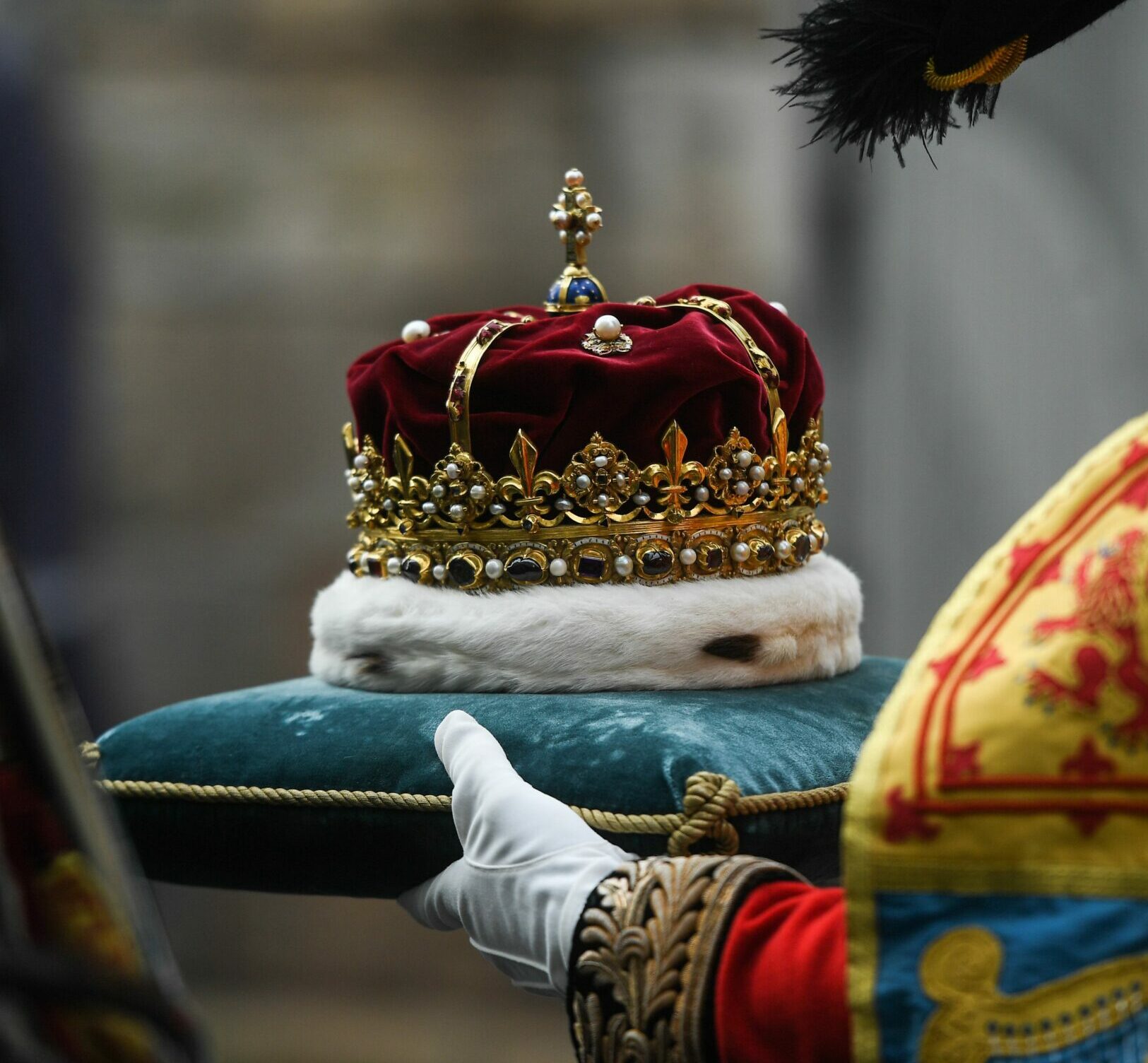
Photo: Story Picture Agency/Shutterstock
“The bonnet of the crown was of purple velvet; but in the year 1685 it got a cap of crimson velvet, adorned as before, with four plates of gold richly wrought and enamelled, and the bonnet is turned up with ermine.
“In the terms of the act ratifying the union betwixt the kingdom of Scotland and the kingdom of England, the crown, sceptre and sword of state shall be continued to be kept within the kingdom of Scotland within the crown room in the castle of Edinburgh.”
Rumours circulated that they had been removed to London, and Sir Walter Scott petitioned The Prince Regent, later George IV. The Prince allowed him to form a search party and explore the castle.
On February 4, 1818, Scott and his team uncovered the jewels in a strong room, still locked inside the chest. Scott’s discovery was absolutely sensational in its day, and sparked widespread patriotism.
He petitioned the King to put the Crown Jewels on display in the Edinburgh Castle. Visitors can usually see them when touring the castle.
On Monday, hereditary Keeper of the Palace Holyroodhouse, Alexander Douglas-Hamilton placed the crown on the Queen’s coffin. She lies in state in St Giles’ Cathedral, one of Scotland’s most important medieval parish church buildings.
For visiting information at St Giles’ Cathedral, click here.


